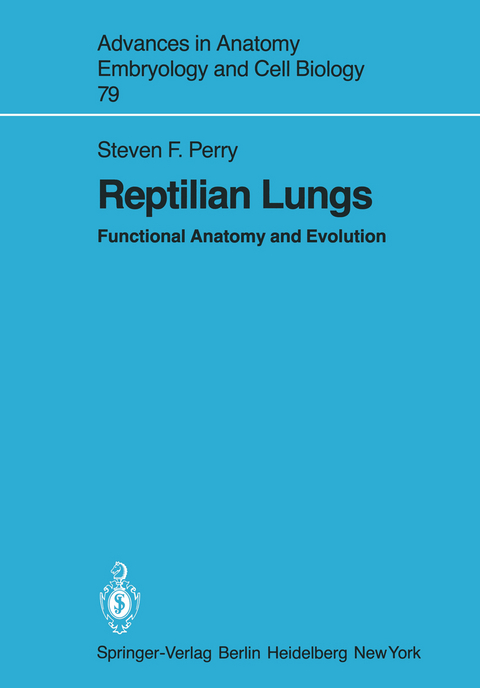
Reptilian Lungs
Springer Berlin (Verlag)
978-3-540-12194-7 (ISBN)
1 Introduction.- 1.1 Functional Anatomy and the Evolution of the Respiratory System.- 1.2 Descriptive Classification of Lung Types.- 2 Morphometry of Reptilian Lungs, with Special Emphasis on the Comparison of the Unicameral Lungs of the Teju, Tupinambis nigropunctatus Spix, and the Multicameral Lungs of the Savanna Monitor, Varanus exan- thematicus (Bosc).- 2.1 Animals.- 2.2 Symbols and Definitions.- 2.3 Morphometric Methods.- 2.4 Morphometric Results.- 2.5 Discussion: Morphometric Comparison of Reptilian Lungs.- 2.6 Summary.- 3 The Pump Mechanism, Its Combination with the Exchanger, and Breathing Strategy.- 3.1 Symbols and Definitions.- 3.2 The Pump.- 3.3 Breathing Strategy and the Pump.- 3.4 Interaction of the Exchanger and Pump in Breathing Strategy: the Ideal High-performance Lung.- 4 Speculations on the Evolution of the Amniote Respiratory System.- 4.1 Breathing Mechanism in the First Reptiles.- 4.2 Lung Structure in the First Reptiles.- 4.3 Hollow Bones as Indicators of Lung Structure.- 4.4 Possible Respiratory Function of the Gastralia.- 4.5 Possible Role of the Ornithischian Pelvis in Breathing.- 4.6 Broadened Ribs and Alternative Breathing Mechanisms.- 4.7 Implications for the Evolution of Lung Structure.- 5 Summary.- References.
| Erscheint lt. Verlag | 1.5.1983 |
|---|---|
| Reihe/Serie | Advances in Anatomy, Embryology and Cell Biology |
| Zusatzinfo | VIII, 84 p. 14 illus. |
| Verlagsort | Berlin |
| Sprache | englisch |
| Maße | 170 x 244 mm |
| Gewicht | 210 g |
| Themenwelt | Studium ► 1. Studienabschnitt (Vorklinik) ► Anatomie / Neuroanatomie |
| Schlagworte | Evolution • Evolution (Biol.) • Kriechtiere • Lung • Lunge • tissue |
| ISBN-10 | 3-540-12194-3 / 3540121943 |
| ISBN-13 | 978-3-540-12194-7 / 9783540121947 |
| Zustand | Neuware |
| Haben Sie eine Frage zum Produkt? |
aus dem Bereich


